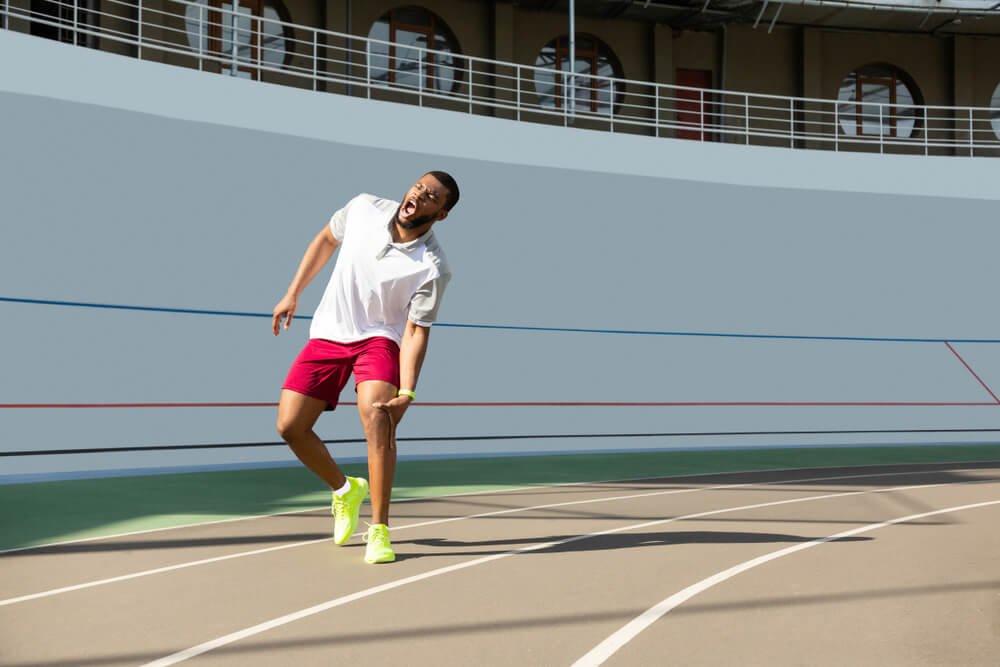The knees are the joints that allow you to explore the world. From a leisurely stroll in the park to climbing mountain trails, your knees are the foundation for your movement and independence. Unfortunately, knee pain is a common complaint that can strike people of all ages and activity levels. Knee pain can range from a dull ache to a sharp twinge, and it can have a significant impact on your ability to do the activities you love. Common culprits behind knee pain can include:
- Sprained ligaments.
- Torn meniscus.
- Tendinitis.
- Osteoarthritis.
- Weakness and imbalance.
However, there is good news. Knee pain doesn’t have to be the end of your active lifestyle. Exercise can be a powerful tool to help you manage and potentially even prevent knee pain.
Should you exercise with knee pain?
While it may seem like the best choice to rest when you’re struggling with knee pain, not being active can actually make your knee problem worse in the long run. There’s power in movement, and it can be an excellent strategy to help manage knee pain for the following reasons:
- Strength equals stability — The muscles surrounding your knee joints act like natural braces, providing support and stability. Exercise can help strengthen these muscles, which can significantly reduce stress on the joint and decrease your risk of pain.
- Flexibility freedom — Tight muscles can pull on your joints and contribute to pain. Exercise can help improve your flexibility, which can allow your knee to move through its full range of motion without restriction.
- Weight management — Carrying extra weight can put added stress on your knees. Exercise can help you maintain a healthy weight, reducing strain on your joints and alleviating pain.
- Pain relief from within — Exercise can actually help manage pain. Physical activity releases endorphins, your body’s natural painkillers. Exercise also helps circulation, which can reduce discomfort.
- Improved bone health — Exercise, particularly weight-bearing exercises like walking, running or dancing, can help strengthen your bones, including those in your legs and around your knees. This increased bone density can help protect your joints from future injuries and degeneration.
- Better sleep — Exercise can improve the quality of your sleep, which is crucial for overall health and healing. When you’re well rested, your body can be better equipped to manage pain and repair tissue.
What exercises can help with knee pain?
If knee pain has you wincing with each step, don’t despair. From the gentle resistance of water to targeted movements designed to strengthen and support, exercises can get you on your way to improved joint health and mobility.
Aquatic therapy can be a great way to start if you’re new to exercise or have significant knee pain. The warm water provides buoyancy that helps take the weight off your joints. The water provides natural resistance to help you build strength without putting unneeded stress on your knees. The buoyancy allows you to move more freely and comfortably as you do gentle exercises like walking in the water, leg lifts or stretches. This makes aquatic therapy a safe and effective way to help improve your strength, flexibility and range of motion while managing your knee pain.
If aquatic therapy isn’t available or your physical therapist recommends you to try some specific therapeutic exercises at home to boost the effectiveness of your treatment, the exercises may include:
- Straight leg raises — Lie on your back with one leg straight and the other bent. Slowly raise the straight leg a few inches off the floor. Hold the stretch for a few moments and slowly lower it back down. Repeat the stretch with the other leg. This exercise helps strengthen the quadriceps muscles in the front of your thigh, which are crucial for knee stability.
- Wall squats — Stand with your back against the wall and your feet shoulder width apart. Slowly slide down the wall like you’re going to sit in a chair, keeping your back straight and core engaged. Hold for a few moments, and slowly push yourself back up to your starting position. This exercise can help strengthen your quadriceps, hamstrings and glutes, all of which contribute to knee stability.
- Heel slides — Sit on a chair with your feet flat on the floor. Slowly slide your heels away from your chair as far as you comfortably can. Keep your toes on the floor as you slide your feet out. Hold this position for a few moments, and then slide your heels back toward your chair. This exercise can help strengthen your hamstrings.
- Calf raises — Stand with your feet shoulder width apart and hold on to a sturdy object for balance. Rise up onto your toes, hold for a few seconds and then lower your heels back down to the floor. Calf raises help strengthen your calf muscles, which play a role in shock absorption and ankle stability. Both of these indirectly benefit your knees.
- Side leg lifts — Lie on your side with your legs stacked on top of each other. Slowly lift the top leg a few inches. Hold this position for a few seconds and then slowly lower your leg back down. After a few reps, roll over to your other side and repeat with your other leg. This exercise can help strengthen the hip abductor muscles, which help stabilize your pelvis and keep your knees aligned.
It’s important to listen to your body and start slowly. Follow all instructions given to you by your physical therapist. If you experience any pain during the exercise, stop and talk with your physical therapist. They can help you create a safe and effective exercise program tailored to your specific needs and limitations. This plan can be adjusted as needed.
Exercises to avoid with knee pain
Not all exercises are created equally. There are certain activities and exercises that can aggravate your condition. Some exercises to avoid if you’re experiencing knee pain include:
- High-impact activities — Activities like running, jumping jacks and plyometrics can put a lot of stress on your knee joints. Opt for lower-impact exercises like swimming, cycling or walking on soft surfaces.
- Deep lunges — While lunges can be a great exercise to help strengthen your legs, deep lunges can put strain on your knee. This can be especially true if you have preexisting pain. Stick to shallower lunges or modified versions that don’t require such deep knee flexion.
- Squats with bad form — Squats are a fantastic exercise for strengthening the muscles around your knees, but correct form is crucial. Avoid squats with excessive weight, squatting too low or letting your knees cave inward. If the squat causes pain, consider doing wall squats or body weight squats until your form improves.
- Stair climbing — Repeatedly climbing stairs can be tough on your knees, especially if you have pain. Take the elevator instead, when possible, or use a flat, stable surface for walking exercises.
Making exercise a habit
By incorporating exercise into your daily routine, you can take control of your knee pain, improve your overall well-being and help keep your knees happy for years to come! Here are some tips for making exercise a habit:
- Find activities that you enjoy — Exercise shouldn’t feel like a chore. Choose activities you find fun and engaging.
- Start slow and gradually increase intensity and duration — Don’t try to do too much too soon. Begin with shorter exercise sessions and gradually increase the duration and intensity as your fitness level improves.
- Set realistic goals — Setting small, achievable goals can help you stay motivated. Celebrate your accomplishments along the way.
- Find a workout buddy — Having a friend or family member to exercise with can provide support and accountability.
- Listen to your body — It’s OK to take rest days when your body needs them. Don’t push yourself through pain.
Knee pain can be frustrating, but it doesn’t have to control your life; Excel Sports & Physical Therapy can help
At Excel Sports & Physical Therapy, we understand the frustrations dealing with knee pain can cause. Our team of experienced physical therapists can help you by working with you to create a personalized treatment plan tailored to your specific needs and goals. We offer a variety of approaches, including manual therapy, aquatic therapy, trigger point therapy, running programs and therapeutic exercises. Using your customized treatment plan, we can help you manage your pain, improve your function and get back to the activities you love.
Call us or request an appointment today for your knee pain relief.

